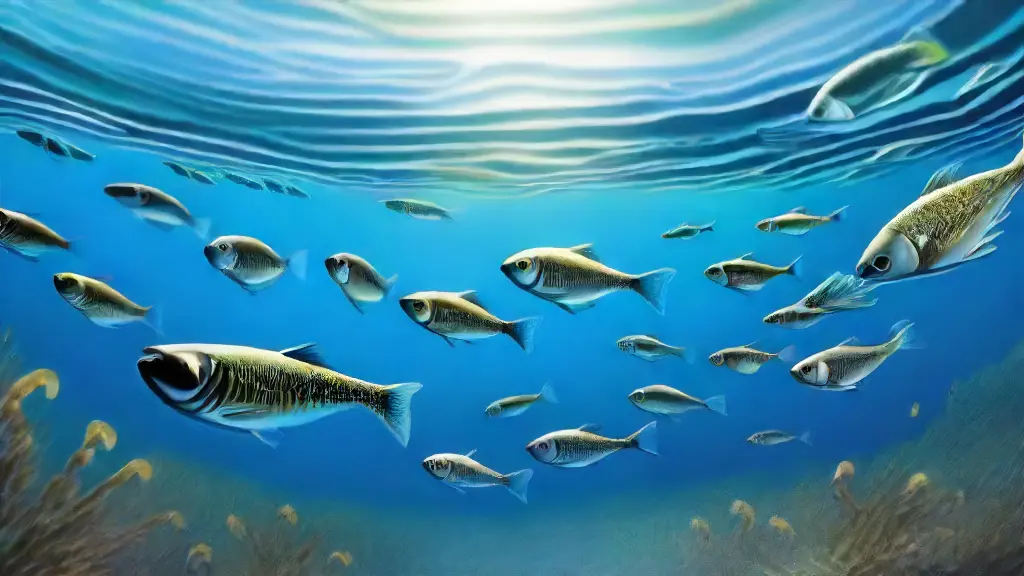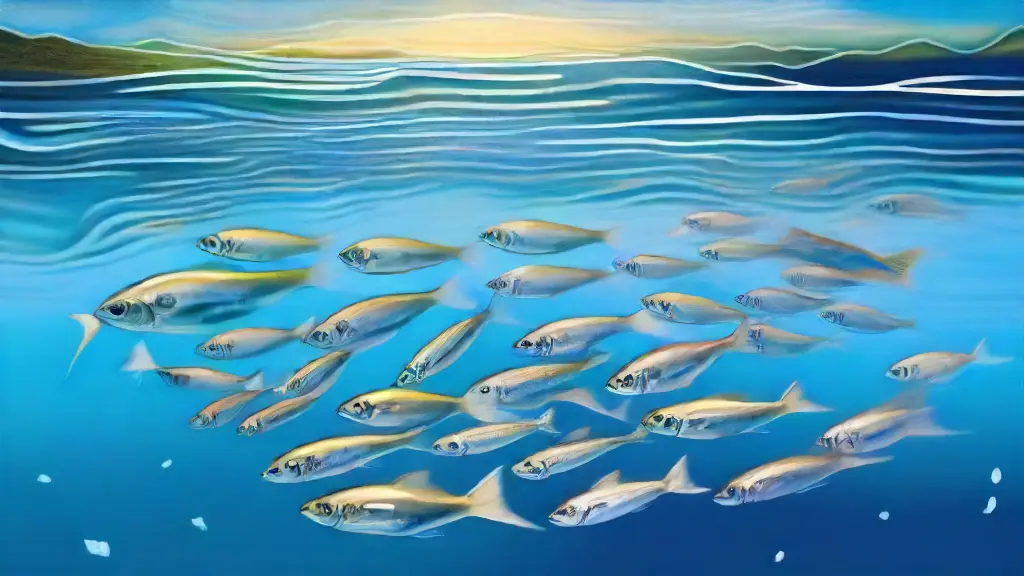- Bait fish exhibit behavioral adaptations in response to environmental stressors such as temperature fluctuations, water pollution, or changes in water flow, altering their swimming patterns and habitat usage.
- These aquatic biodiversity-rich ecosystems are susceptible to disruption when faced with stressors, leading to changes in fish behavior and potentially altering the balance of the ecosystem. The study of behavioral adaptations in aquatic ecosystems is crucial for understanding and preserving aquatic biodiversity.
Environmental Pressure on Bait Fish Behavior
The intricate relationships between aquatic life and their environments are a guiding force in shaping the behavior of bait fish, influencing their survival and the delicate ecological balance in our waterways.
Water temperature has a profound impact on bait fish behavior, with changes influencing their activity and feeding patterns. For instance, the yellow perch is known to become more active and feed voraciously during temperature fluctuations, while the bluegill tends to be more sluggish in colder waters.
Water quality is another crucial factor, with changes in pH and dissolved oxygen levels significantly affecting bait fish behavior and survival.
Maintaining healthy fish physiology in these environments is vital for bait fish, and its implications for live bait management are significant, particularly for species like the fathead minnow that are sensitive to these changes. significantly affected by the interplay of light and darkness.
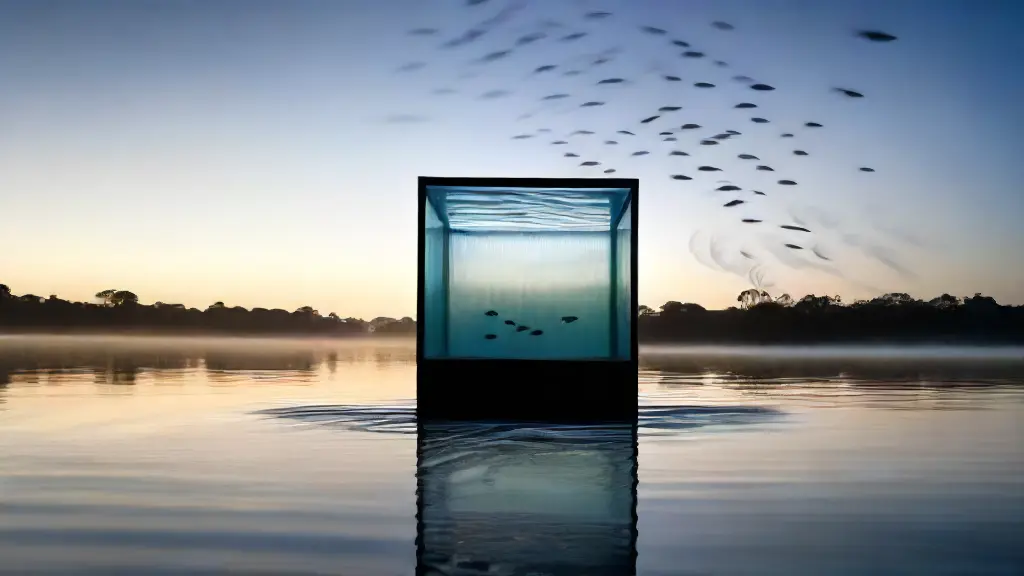
Ecological Balance Impact
The fragile harmony between humans and aquatic ecosystems is increasingly under threat due to the cumulative effects of environmental pressures on the world’s waterways.
Water pollution, a dominant stressor, wreaks havoc on aquatic life.
Strong chemicals and pollutants from agricultural runoff and industrial activities can irreversibly alter the natural pH levels of waterways, causing widespread harm to fish populations and other aquatic species.
In addition to water pollution, overfishing is another significant contributor to ecological imbalance.
When fish populations are overfished, it disrupts the intricate food chain, leaving vulnerable species without a crucial food source. This can have severe consequences, including population declines or even extinctions.
Awareness of the unintended consequences of bait fish behavior is crucial to comprehending the ecological balance impact. By understanding these effects, we can better navigate the delicate balance between human activities and aquatic ecosystems.
Aquatic Ecosystems
- More than 80% of the world’s wastewater is released into the environment without adequate treatment, contributing to water pollution.
- The average American generates about 100 pounds of plastic waste per year, with a significant portion of it ending up in waterways and harming aquatic life.
- Fishing industries are responsible for 14% of global greenhouse gas emissions, with overfishing and destructive fishing practices exacerbating the issue.
- It is estimated that 1/3 of the world’s fish stocks are overfished, with 60% being maximally fished, and only 7% being underfished.
Stress Management Strategies
When we embark on a fishing trip, we often focus on our gear, the type of fish we’re after, and the ideal spots to cast our lines. It’s equally important to tune in to our own mental wellbeing, as stress can quickly derail an otherwise enjoyable experience.
Understanding the dynamics of predator-prey relationships can have a profound impact on our emotional state when fishing.
For instance, patience is a vital component of bait fish ecology, as it allows us to stay focused and avoid exhaustion.
By recognizing the signs of environmental stress, we can avoid letting the frenzy of emotions take over and ruin our trip.
Adapting to changing conditions is essential in fishing, and this principle also applies to managing live bait. Effective strategies for stress management include using the right type of bait, handling it correctly, and minimizing hook sets outside of regular fishing hours.
Fish Behavior Adaptations
Life underwater is a constant dance of adaptation, as fish navigate the intricate balance of their aquatic ecosystems.
From altered water chemistry to shifts in their social structures, fish must constantly adapt to survive. One of the most impressive ways they do this is through camouflage and concealment.
Certain species have developed an extraordinary ability to blend into their surroundings, thanks to their body coloration, pattern, and texture.
Some fish can change color to match their environment, while others have evolved to mimic the patterns and shapes of their surroundings.
The anglerfish, with its striking lure on top of its head, is a master of camouflage.
It can change the color and pattern of its body to match the surrounding environment, making it nearly invisible. Fish also employ stealth to sneak up on prey, with some species.
Water Chemistry Influence
The subtleties of aquatic life rely heavily on the delicate harmony of water chemistry, where minute changes can have far-reaching consequences for the well-being of entire ecosystems.
: Understanding the intricate balance of water chemistry is essential for maintaining the health of aquatic ecosystems.
In fact, environmental monitoring reveals that even slight changes in water chemistry can have significant effects on the ecosystem, much like fish behavior analysis has long suggested.
The pH level of water is a critical factor in determining the overall health of the ecosystem.
At its most basic, pH measures the concentration of hydrogen ions in the water, with a pH of 7 being neutral and lower values indicating acidity.
Alkalinity and hardness are two related concepts that play a significant role in shaping the chemical makeup of water. Alkalinity helps to buffer changes in pH, while hardness determines the level of mineral content, ultimately influencing the health of aquatic organisms in environmental monitoring and fish behavior analysis.
Bait Fish Biology
In the depths of lakes and rivers, aquatic ecosystem resilience thrives, supported by a intricate web of relationships between species. Beneath the surface, a tiny world of life teems, with bait fish playing a vital role in maintaining the delicate balance of their ecosystem.
Adaptations for Survival:
Specially designed sensory organs allow bait fish to detect vibrations and predators, granting them a degree of protection.
Unique physical features such as mottled colorations and slender bodies enable them to blend seamlessly into their surroundings.
Behavioral Responses to Environmental Changes:
When water temperature or quality fluctuates, bait fish adjust their behavior accordingly. This may involve changes in feeding habits or migration patterns to avoid predator-rich waters.
Reproduction and Life Cycle:
Bait fish employ diverse reproductive strategies to ensure their survival, ranging from spawning multiple times a year to protecting their young in complex nest structures.
Fish Population Dynamics
The intricate relationships within aquatic ecosystems rely on a fragile balance between species, where even slight changes can have far-reaching consequences.
Environmental Influences
Water temperature plays a vital role in bait fish biology, as changes in temperature can alter their metabolism, activity levels, and even daily routines, which can be mitigated by stress mitigation strategies.
.
Managing pH levels is also crucial, as it can significantly impact fish habitat and survival, where a balance between acidity and alkalinity is essential for fish to thrive, making it a vital consideration in conservation efforts.
.
Nutrient availability is another crucial factor in determining fish populations and ecosystem health, where a scarcity of nutrients can stifle growth, while an overabundance can lead to an imbalance, which can be mitigated through the implementation of bait fish biology and stress mitigation strategies.
Can I Use Live Bait Safely
In the constant quest to catch the perfect fish, anglers often ponder the use of live bait. Without a doubt, live bait fish are an integral part of aquatic ecosystems, serving as a vital food source for many species.
Understanding their life cycle is crucial for responsible angling, as it affects their behavior and potential impact on the ecosystem.
Live bait fish are an essential component of fish population dynamics, serving as a vital food source for many aquatic species.
Their life cycle is a delicate balance of birth, growth, and migration, with females laying thousands of eggs that hatch into larvae. As they grow, they feed on small invertebrates and begin to migrate to deeper waters, making their life cycle vulnerable to disruptions.
Which can lead to devastating effects on their offspring’s survival and the overall fish population dynamics.
Live Bait Fish
- Females of live bait fish lay thousands of eggs that hatch into larvae.
- Live bait fish feed on small invertebrates as they grow.
- Their life cycle is vulnerable to disruptions, which can lead to devastating effects on their offspring’s survival and the overall fish population dynamics.
- Live bait fish are an essential component of fish population dynamics, serving as a vital food source for many aquatic species.
Best Times of Year to Use Bait Fish
Best Techniques for Understanding Bait Fish Movement Patterns
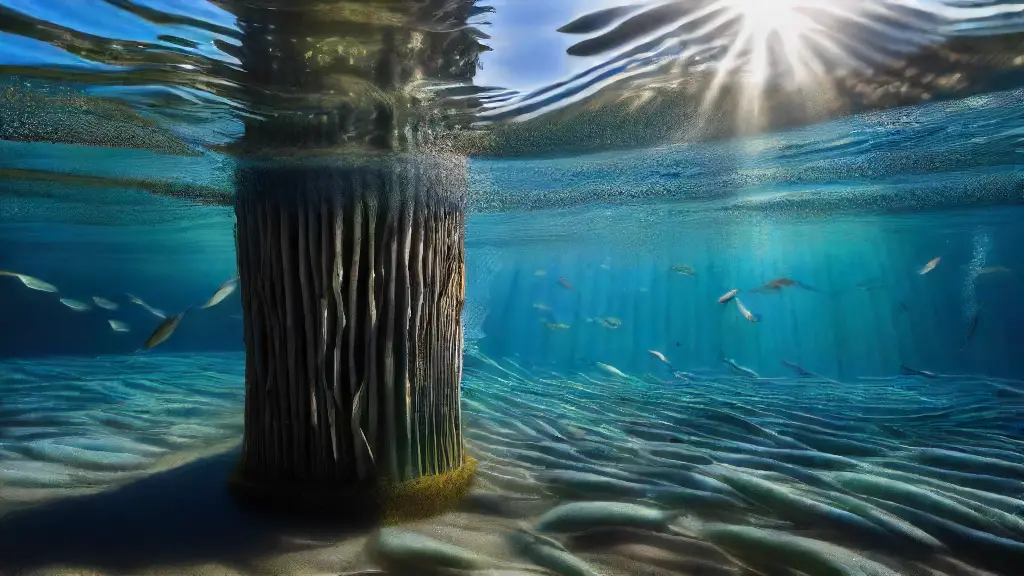
Unraveling the Secrets of Bait Fish Movement Patterns In the world of fishing, mastering the art of understanding the intricate dynamics of aquatic life is crucial for success. When you can decipher the subtle signs and patterns of bait fish behavior, you’ll be well-equipped to capitalize on opportunities and increase your chances of catching desired species.
Recognize the importance of understanding bait fish movement patterns for successful baiting.
By analyzing the way bait fish move and interact with their surroundings, you’ll gain valuable insights to inform your fishing strategies.
Aquatic life is characterized by intricate dynamics, with currents and structures playing a vital role in shaping the environments fish inhabit. To truly master the art of reading water, you need to incorporate the principles of aquatic life, bait fish behavior modification, fish movement patterns analysis, water currents monitoring, and stream dynamics study.
How to Analyze Bait Fish Migration Routes
In the quest to reel in a big catch, freshwater anglers must decipher the enigmatic movements of bait fish. By studying the subtle clues left behind by these schooling fish, savvy anglers can pinpoint the most productive areas and timing for catching their desired species.
River flow observation plays a significant role in influencing bait fish movement, with changes in current attracting or repelling these schooling fish.
Water temperature and flow have a profound impact on bait fish behavior.
Tidal patterns interpretation can reveal the mysteries of bait fish migration routes, while recognizing the structure and depth of the water allows anglers to read the subtle changes in the water’s topography, such as submerged logs or rocky outcroppings, that can attract or disperse bait fish. Schooling behavior research is essential to understand the dynamics of bait fish movement, as is the ability to adapt to River flow observation, Tidal patterns interpretation, Fish migration routes, and Predator avoidance techniques.
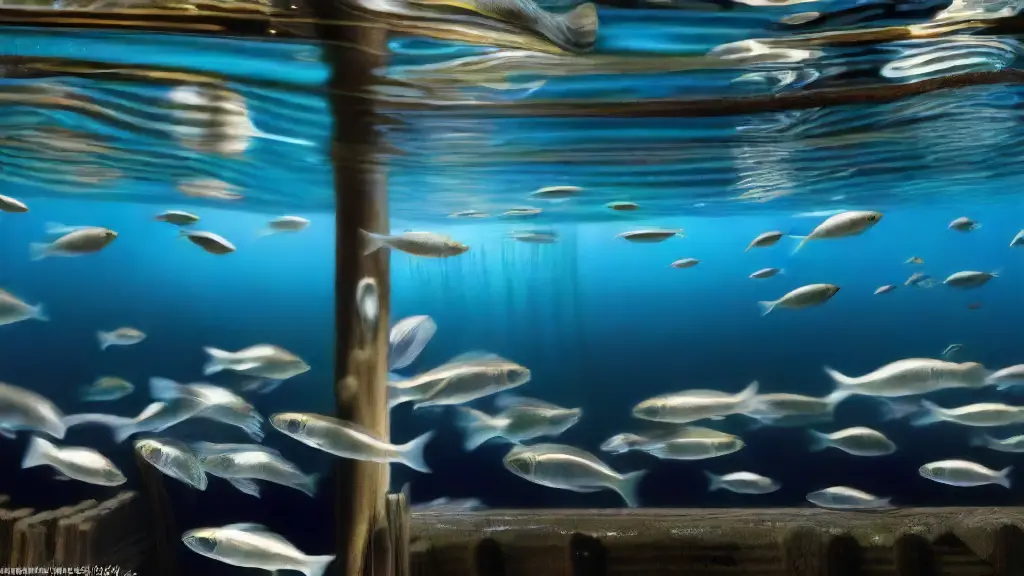
What Determines Fish Feeding Habits
The underwater world is a complex tapestry of predator and prey, where the intricacies of fish feeding habits are woven into a subtle dance of survival. Underwater detectives use an array of techniques to unravel the mysteries of this behavior, requiring an understanding of the intricate relationship between environmental and behavioral factors.
Fish are often driven by instinct, but their feeding habits are also influenced by the aquatic environment.
For instance, water temperature has a significant impact on fish metabolism and activity, with warmer waters typically stimulating increased feeding activity.
Light penetration is another crucial factor, as fish often adjust their Prey capture strategies to correspond with changes in light levels. In deeper waters, fish may rely on bioluminescence to locate prey, while in shallower areas, they may rely on visual cues to opportunistic Feeding habits analysis. Water currents also play a significant role in shaping the feeding behaviors and prey capture strategies of bait fish species.
Fish Feeding Habits
- Water temperature has a significant impact on fish metabolism and activity, with warmer waters typically stimulating increased feeding activity.
- Fish often adjust their prey capture strategies to correspond with changes in light levels, with bioluminescence being used to locate prey in deeper waters and visual cues in shallower areas.
- Water currents also play a significant role in shaping the feeding behaviors and prey capture strategies of bait fish species, such as altering the distribution and movement of prey.
- Fish are often driven by instinct, but their feeding habits are also influenced by the aquatic environment, making behavioral and environmental factors intricately connected.
How to Monitor Water Currents
The intricate choreography of riverbeds, oceans, and ponds plays a vital role in determining the success of even the most seasoned angler’s endeavors. Water’s subtle ballet of currents has a profound influence on the behavior of aquatic life.
Fish behavior is heavily influenced by water currents.
As you wade into the water, take note of the subtle changes in the flow.
Ripples and eddies may seem insignificant, but they hold the key to deciphering the underlying dynamics. The way bait fish respond to variations in temperature fluctuations can provide valuable clues about their likely whereabouts.
Strong winds can create turbulence in the water, influencing the velocity of flows and altering their course.
Understanding how bait fish move in response to changes in salinity levels is crucial for pinpointing their likely congregation areas. To accurately decipher currents, remain stationary and patient, carefully observing how light penetrates the water clarity.
What Affects Fish Movement Patterns
The intricacies of aquatic ecosystems are a testament to the adaptability of fish, with various species developing unique strategies to thrive in their environments. As waterways vary in their complexity, so too do the fish that inhabit them, with species like trout and salmon exhibiting distinct movement patterns tied to their surroundings.
Environmental factors play a significant role in shaping fish movement patterns, with water temperature, for instance, directly affecting fish metabolism.
Species identification methods reveal that strong currents and fast-paced flow rates can also impact fish behavior, influencing their speed and direction of movement.
Fish tracking techniques have shown that certain species are more responsive to changes in water depth and structural features.
Light intensity and visual cues are another crucial aspect of fish movement, with some species more active during dawn and dusk hours when light intensity is lower. can significantly impact the accuracy of species identification.
Fish Movement
- Fish metabolism is directly affected by water temperature.
- Strong currents and fast-paced flow rates can impact fish behavior, influencing their speed and direction of movement.
- Certain species of fish are more responsive to changes in water depth and structural features.
- Light intensity and visual cues can significantly impact fish movement, with some species more active during dawn and dusk hours.
Can You Identify Bait Fish Species
For the modern fisherman, understanding the intricate dance of bait fish is the key to unlocking the secrets of a successful catch. Lure selection tips often revolve around identifying the patterns of these small, yet elusive, species.
So, what drives their schooling behavior and how can we leverage this knowledge to reel in the big ones?
Fish often congregate in areas with high concentrations of food sources, such as schools of minnows or plankton.
Fishing gear optimization hinges on identifying these patterns of bait fish movement and behavior, making it easier to locate and catch the target species. Examples of bait fish species and their movement patterns include the threadfin shad, which forms massive schools that can stretch for acres; the golden shiner, which is known for its schooling behavior in shallow waters; and the fathead minnow, which thrives in a variety of aquatic environments.
How to Optimize Lure Selection
In the world of fishing, a single misstep in lure selection can mean the difference between a successful catch and a disappointing return to shore. To master the art of reeling in the big one, anglers must first understand the intricacies of lure selection.
Mastering the art of lure selection is a crucial aspect of a successful fishing experience.
It requires a deep understanding of the three key factors influencing fish movement patterns.
Structure and Contour of the Fishing Location
The shape and features of the fishing location play a significant role in determining fish population dynamics and fishing pressure reduction. Bait fish population management, for instance, are heavily influenced by the structure of the water body.
Water Temperature and Chemical Composition
Water temperature and chemical composition also have a profound impact on fish behavior, with a slight change in water temperature significantly altering the movement patterns of fish. Water quality monitoring can help ensure sustainable fishing practices by reducing fishing pressure and improving Bait fish population dynamics, Fish population management, and Fishing regulations compliance.
Key Factors Influencing Fish Movement Patterns
- Structure and Contour of the Fishing Location plays a significant role in determining fish population dynamics and fishing pressure reduction.
- Water Temperature and Chemical Composition have a profound impact on fish behavior, with a slight change in water temperature significantly altering the movement patterns of fish.
- Bait fish population management, for instance, are heavily influenced by the structure of the water body.
- Water quality monitoring can help ensure sustainable fishing practices by reducing fishing pressure and improving Bait fish population dynamics, Fish population management, and Fishing regulations compliance.
What Are Fish Prey Capture Strategies
The ocean’s complex network of predators and prey relies heavily on a delicate interplay of adaptations, strategies, and habitats. Fish behavior and movement are shaped by a range of ecological factors, including the temperature and depth of their aquatic environment.
For instance, temperature fluctuations can dramatically alter fish behavior, with cold-water fish being more sluggish while warm-water fish become more active.
As a result, anglers and researchers alike must take into account the influence of these environmental variables when trying to understand and capitalize on fish behavior.
Fish migration patterns and timing, such as seasonal movements and tidal cycles, play a significant role in shaping their behavior and prey capture strategies. Understanding these patterns is essential for effectively targeting and tracking fish.
Interestingly, fish have been found to employ a range of tactics, including schooling behavior and the exploitation of auditory cues like the sounds generated by bait fish or other prey. School focuses on the development of a comprehensive program for aquatic ecosystem conservation, Fish behavior modification, Fishing gear innovation, Aquatic vegetation study, and Water depth measurement.
Can You Improve Angler Techniques
Understanding the complexities of underwater environments is vital for anglers seeking to maximize their catch. By recognizing hidden patterns and structures that fish are attracted to, anglers can pinpoint the most lucrative fishing spots.
Fishing spot selection is a critical aspect of angling, and a thorough analysis of substrate composition can unveil hidden truths about fish behavior and movement patterns.
By recognizing these patterns, anglers can refine their fishing technique to target specific species and increase their chances of reeling in a catch.
Incorporating fishing structure design and underwater structure installation into their techniques can help anglers create an inviting environment that attracts and sustains a healthy fish population. By recognizing these patterns, anglers can refine their fishing technique to target specific species and increase their chances of reeling in a catch. Understanding fish behavior and movement patterns can help anglers anticipate the location of fish in various fishing structures and customize their fishing techniques and tackle accordingly.
| Fishing Spot Selection Factors |
Hidden Patterns and Structures |
Underwater Structure Installation |
Fish Behavior and Movement Patterns |
| Substrate composition |
Recognition of fish attraction patterns |
Incorporating fishing structure design |
Anticipation of fish location |
| Thorough analysis of substrate composition |
Recognition of hidden truths about fish behavior |
Creating an inviting environment |
Customizing fishing techniques and tackle |
| Refining fishing technique to target specific species |
Pinpointing lucrative fishing spots |
Increasing chances of reeling in a catch |
Understanding fish movement patterns |
How Bait Fish Respond to Environmental Stress
How Bait Fish Behavior Differs Between Species
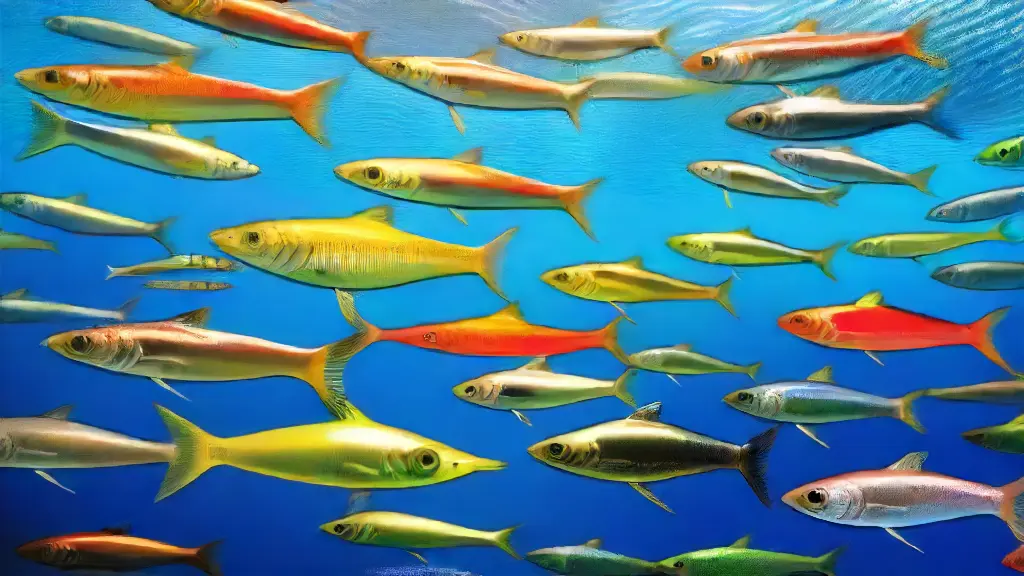
The art of fishing relies heavily on the understanding of diverse species, each with its unique characteristics that affect their performance as bait. While some species may be more adept at enticing predators, others may be more inclined to evade capture.
This paradox has led many anglers to seek a deeper understanding of the intricacies of bait fish behavior, allowing them to optimize their catches.
How Bait Fish Behavior Differs Between Species
Bait fish species exhibit distinct behaviors, influencing their utility as bait.
Some species are more active, attracting predators, while others are more timid. This behavioral plasticity can significantly impact the success of a fishing trip.
Understanding these differences is crucial for effective use as bait. Even within the behavioral plasticity, aquatic community structure, foraging guilds, escape responses, predator avoidance strategies, these factors collectively influence bait fish behavior.
Behavioral Plasticity
In aquatic ecosystems, a delicate balance exists between species that rely on each other for survival. Schooling adaptations, a unique phenomenon where individuals move in synchrony, is a testament to their remarkable ability to cooperate and respond to their environment.
These bait fish, ranging from minnows to shad, thrive in a variety of environments, from slow-moving streams to open waters.
Defined as small, bait fish species that are often overshadowed by larger predators, they have developed unique strategies to survive and even thrive.
Habitat choice is a key factor in their success, as they migrate to areas with optimal water temperature, dissolved oxygen levels, or food sources. Others, like the fathead minnow, have been observed to adjust their feeding patterns to maximize their chances of survival. For instance, some species exhibit remarkable migratory behavior, moving to areas where they can take advantage of schooling adaptations, habitat choice, feeding patterns, and social learning.
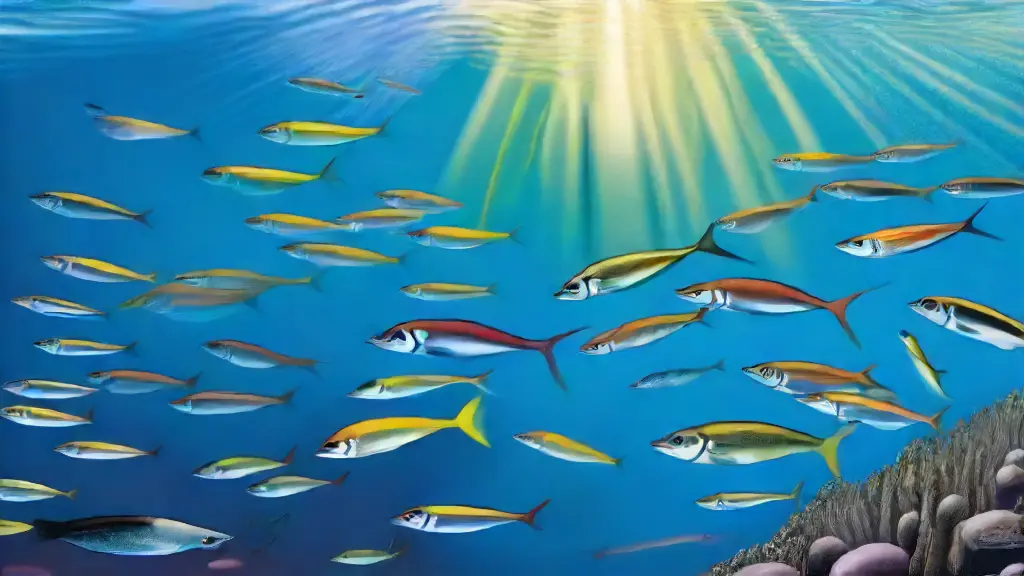
How Do Bait Fish Adapt
In the vast, interconnected network of aquatic life, the struggle for survival is a perpetual dance between species, where each player relies on its unique abilities to outmaneuver competitors and thrive. With a complex web of predator-prey interactions at play, every species, from the tiniest zooplankton to the largest fish, has evolved remarkable adaptations to ensure its place in the food chain.
Bait fish, often overlooked yet crucial to the aquatic food web, have developed a range of adaptations that enable them to flourish in their environments.
These small fish serve as a vital food source for larger predators, and their ability to adapt to their surroundings is key to their survival.
Physically, bait fish have evolved remarkable traits that aid their survival. Their slender bodies and vibrant scales help them blend in with their surroundings, making them difficult to detect in predator-prey interactions.
Adaptations of Bait Fish
- Their slender bodies and vibrant scales help them blend in with their surroundings, making them difficult to detect in predator-prey interactions.
- Bait fish have evolved remarkable traits that aid their survival.
- These small fish serve as a vital food source for larger predators.
- Every species, from the tiniest zooplankton to the largest fish, has evolved remarkable adaptations to ensure its place in the food chain.
Foraging Strategies Differ
In the intricate web of aquatic life, the dynamics of foraging strategies are a fascinating phenomenon that has captivated the attention of scientists and anglers alike. Bait fish, with their remarkable diversity, play a vital role in this ecosystem, with over 10,000 species inhabiting our planet’s freshwater habitats.
Habitat partitioning significantly influences the behavior of these species, as they occupy distinct ecological niches.
For instance, schooling species like minnows and shad rely on group behavior for survival and protection, while solitary species like goldfish and koi employ individual cunning and adaptability to thrive.
Characteristics of Schooling Species
Schooling species, such as minnows and shad, are incredibly social, often comprising hundreds of individuals. They rely on synchronized movement and communication to optimize habitat use and maintain the integrity of aquatic ecosystem services.
Escape Response Tactics
In the intricate dance of survival, the baits fish have mastered the art of escape.
Species-specific Escape Mechanisms are a testament to the innovative strategies developed by different species to evade capture.
For instance, Shrimplike Bait Fish employ a shell-based defense, relying on their armored bodies to protect themselves from predation-mediated interactions.
On the other hand, Threadfin Bait Fish thrive through speed, utilizing their rapid swimming ability to outrun their pursuers and improve foraging success.
Siamese Twins Bait Fish have evolved cooperative escape tactics, working together to confound predators and enhance habitat quality, ultimately increasing their chances of survival in a world where resource competition is rampant.
Schooling Benefits
The art of schooling in fish has long fascinated scientists and the general public alike, with its intricate social dynamics and remarkable adaptability. Schooling behavior in fish is a complex and fascinating phenomenon that has evolved to provide numerous benefits to individuals within the group.
From protecting against predators to exploiting food sources, schooling offers many advantages that have contributed to the success of schooling species.
Biological Adaptations
Scale Protection Mechanisms
Schooling fish often develop unique physical characteristics that aid in their survival.
For instance, certain species exhibit curved mouth morphology, allowing them to feed on water quality effects-rich food sources that others cannot.
Eyesight and Sensory Capabilities
Comparatively speaking, schooling fish have relatively keen eyesight, which enables them to detect predators early and avoid danger in aquatic habitats. Their sensory capabilities, particularly their ability to detect subtle changes in lightdependent behavior, also play a crucial role in tracking water quality effects, depthrelated behavior, and curved mouth morphology in aquatic habitats.
Environmental Cues Influence
The intricate dance between organisms and their environment is a delicate balance that is often influenced by subtle changes in environmental cues. In the vast expanse of water bodies, minute shifts in these cues can have a profound impact on the behavior and survival of aquatic life.
Environmental cues, such as water clarity and visibility, can significantly influence the physical structures and features of an aquatic environment.
For instance, organisms may adapt to live in areas with clearer water or develop specialized structures to aid in finding food in murky waters.
Substrate composition and texture, another type of environmental cue, can also have a significant impact on aquatic systems. Certain organisms may thrive in areas with rough, rocky substrates, while others prefer smoother, sandy or muddy surfaces. Habitat-specific behaviors, such as patterns of movement and migration, feeding habits and preferences, and sheltering and hiding, are essential for the ecological roles of species in aquatic ecosystems, aquatic environments, water bodies, and aquatic systems.
Aquatic Environments
- Minute shifts in environmental cues can have a profound impact on the behavior and survival of aquatic life.
- Organisms may adapt to live in areas with clearer water or develop specialized structures to aid in finding food in murky waters.
- Substrate composition and texture can significantly influence the physical structures and features of an aquatic environment.
- Habitat-specific behaviors, such as patterns of movement and migration, feeding habits and preferences, and sheltering and hiding, are essential for the ecological roles of species in aquatic ecosystems.
Feeding Patterns Vary
In the vast expanse of aquatic ecosystems, species have developed remarkable adaptations to occupy their ecological niches, leading to a captivating array of feeding patterns. Some species, such as opportunistic feeders, capitalize on readily available food sources, while others, with specific dietary preferences, require more specialized foraging strategies.
As they grow and mature, feeding habits can change dramatically, influenced by environmental factors and predator-prey dynamics.
Shifting tides and currents can significantly impact prey availability and distribution, affecting the feeding success of certain species.
Other environmental factors, like water temperature and quality, can also play a crucial role in shaping feeding patterns. The synchrony of schooling behavior, for instance, allows species to more effectively find food sources.
Understanding these complex dynamics is essential, as it highlights the intricate relationships between species and their environments. we can better understand the complex relationships between species in these ecosystems.
SpeciesSpecific Behaviors
In the depths of freshwater and saltwater ecosystems, an intricate social hierarchy governs the daily lives of aquatic prey, who have evolved remarkable survival strategies to evade predators.
Bait fish, often considered just a food source for aquatic predators, have developed unique characteristics that set them apart from one another.
From schooling patterns to feeding habits, each species has developed distinct behaviors that help them thrive in their environment.
One of the most striking examples of aquatic behavior is the way some species of bait fish travel in massive schools.
These schools can number in the thousands and allow the fish to confuse potential predators and increase their chances of survival.
Another key aspect of aquatic life is the way bait fish adapt to changing habitats and environments.
Some species are able to survive in a wide range of aquatic conditions, while others are more specialized and can only be found in specific aquatic ecosystems. In addition to their aquatic predator, aquatic prey, aquatic behavior, and aquatic animal, aquatic life is a complex and fascinating ecosystem.
| Species |
Schooling Patterns |
Habitat Adaptability |
Predator Avoidance |
| Bait Fish |
Travel in massive schools of thousands |
Some species can survive in a wide range of aquatic conditions |
Confuse potential predators with schooling patterns |
| Specialized Bait Fish |
Not applicable |
Only found in specific aquatic ecosystems |
Depend on specific habitats for survival |
Best Techniques for Understanding Bait Fish Movement Patterns
Best Practices for Using Bait Fish in Clear Water
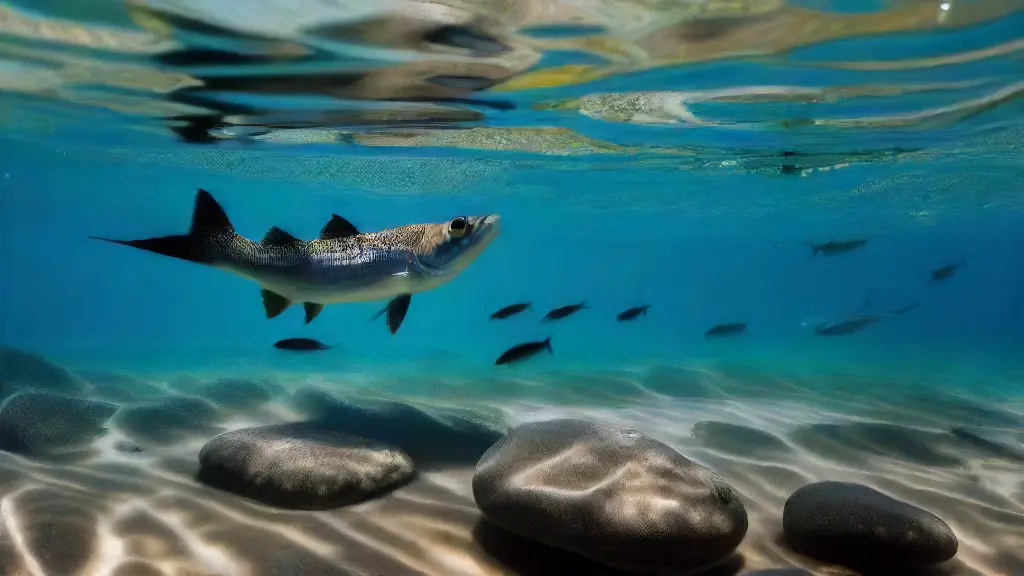
In the tranquil atmosphere of a crystal-clear lake, the delicate balance of the aquatic ecosystem is disrupted by the slightest disturbance, sending fish darting for cover in a frantic bid to escape detection.
Clear water fishing presents unique challenges, as fish are more cautious and harder to catch, but with the right techniques, anglers can increase their chances of success. In transparent water, bait fish behavior is affected by the visibility of their surroundings, making it crucial to understand how they react to different conditions.
Fish in clear water are more likely to be picky eaters, requiring precise presentations and subtle movements to trigger a strike.
Understanding the behavior of bait fish in clear water can help anglers choose the right live bait, presentation and presentation technique.
Aquatic
As dawn breaks over the tranquil horizon, a sense of anticipation builds among anglers, eager to cast their lines into the crystal-clear waters.
Fishing in aquatic environments requires a deep understanding of the delicate balance between water condition and fish behavior.
For instance, did you know that water clarity can affect the type of fishing lure used? In clear waters, topwater lures are often the most effective, while in murkier waters, underwater lures may be the best bet.
But what about live line baiting strategies? Choosing the right live bait for your target species is crucial, and understanding the art of hook setting is essential for successful catches.
By mastering these techniques, anglers can maximize their chances of reeling in the big ones. Sunfish, a popular game fish, thrive in areas with aquatic plants and slowmoving watercondition that allow them to feed on both topwater and underwater prey, including creelpin and bottomdwellers, making driftfishing a effective technique for fishfeeding.
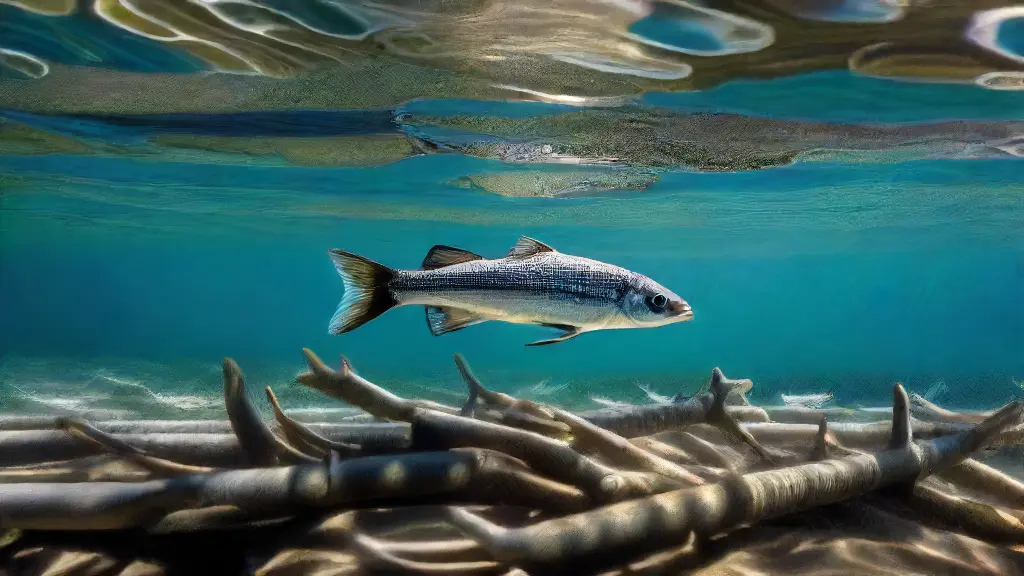
Clearwater Baiting
America’s freshwater gem, the clearwater, is renowned for its brisk currents and stunning aquatic scenery, but beneath its tranquil surface lies a complex dance of species interactions that can make or break a fishing trip.
In these microhabitat zones, the presence of insectlife and mealworms can significantly influence the movement and behavior of fish, making it crucial to incorporate these baits into your flyfishing tactics. Did you know that migratoryfish, such as salmon and steelhead, often congregate in shallow waters during their journey upstream?
Effective baiting strategies in clearwater require a deep understanding of the species’ preferences, as well as the water clarity’s impact on their behavior. By harnessing the power of aeration techniques and gamefish hookset presentations, anglers can significantly enhance their chances of reeling in the big fish.
Clearwater Fishing
- Insectlife and mealworms can significantly influence the movement and behavior of fish in clearwater microhabitat zones.
- Migratory fish, such as salmon and steelhead, often congregate in shallow waters during their journey upstream.
- The water clarity’s impact on fish behavior is crucial to consider when developing effective baiting strategies in clearwater.
- Aeration techniques and gamefish hookset presentations can significantly enhance an angler’s chances of reeling in the big fish.
Fish Behavior
Within the intricate balance of aquatic ecosystems, fish play a vital role in maintaining delicate harmonies. Minnows, in particular, are a fascinating example of this phenomenon, with their impact extending far beyond their small size.
Fish anatomy and senses play a significant part in their behavior, with the importance of vision, lateral line, and olfaction in fish detection being a fundamental aspect of their daily lives.
The eyeball structure of pike is adapted to detect light, movement, and prey, with the lateral line allowing them to detect vibrations and water movements.
Olfaction, the sense of smell, also plays a crucial role in detecting plankton and chemical cues.
In clear water conditions, shorefishing behavior is significantly influenced by their ability to detect visual and auditory cues. They have developed behavioral adaptations to reduce their visibility, including their ability to school among submerged structure, exhibit surface activity reminiscent of plankton, and adopt patterns of movement that mimic those of nymphs to avoid predators like pike and shorefishing enthusiasts who mistake them for minnows, thus reducing their chances of strikezone encounter.
Live Bait Selection
As anglers, we’ve all experienced the thrill of reeling in a prized catch, only to realize that the real secret to success lay not in the gear or technique, but in the bait. The art of selecting the right live bait can be the difference between a successful fishing trip and a disappointing one.
Choosing the right live bait is not just about randomly selecting a type of bait, but rather considering the specific conditions and factors involved in the water.
Bait size and presentation are crucial for success, as a small fish may thrive in calm waters while a larger bait may be more effective in areas with stronger currents.
Water temperature and conditions also play a significant role in bait selection, with cooler waters often calling for smaller baits and warmer waters allowing for larger ones. Whether you’re fishing for suspended bait or suspended growth, understanding the importance of live bait and how to present it effectively with the right tackle and a wet fly is crucial for targeting zebrafish and other aquatic invertebrates, macroinvertebrates, microorganisms, and plants that thrive in aquatic structures.
| Bait Size |
Water Conditions |
Water Temperature |
Presentation |
| Small |
Calm Waters |
Cooler |
Crucial |
| Larger |
Stronger Currents |
Warmer |
Effective |
| Variable |
Varied Waters |
Variable |
Important |
Slow Moving Waters
Waterways, often perceived as idyllic oases, harbor intricate ecosystems where fish have developed remarkable strategies to thrive in environments characterized by slow-moving currents. Beneath the surface, a world of complexity and adaptation exists, where species have evolved to exploit the subtle nuances of their surroundings.
Hydrologic Factors
Water flow rates and how they influence fish behavior are crucial aspects to consider in transparent water fishing.
Fish tend to seek out structure and vegetation, such as lush habitats, to provide camouflage and protection from predators.
Tactics and Strategies
Baitfish species, renowned for their adaptability, are highly effective in slow-moving waters. For instance, shad and herring are prized for their ability to mimic the natural food sources found in these environments, making them ideal choices for live bait. Patterns and Predictions Identifying key holding areas for your target species is crucial allowing you to use the right fishing gear, techniques, and camouflage to catch baitfish species in aquatic vegetation and baitfish habitat while maintaining baitfish sustainability.
Sunfish Lures
In the world of saltwater fishing, few species can match the finicky nature of Sunfish, making them a thrilling yet challenging catch for anglers. Understanding their behavior is crucial when selecting the right lures, as they thrive in gamefishhabitat with abundant vegetation, requiring lures that mimic their natural food sources.
Vibrant and translucent lures can be effective in clear water, as they allow the fish to see the lure more clearly.
It’s essential to avoid using lures that may not be effective in these conditions, such as those with too much flash or noise.
Live bait options, such as insect larvae and mealworms, can be highly effective in clear water, as they offer a tantalizing treat that Sunfish find irresistible. These baits can.
Sunfish
- Sunfish are finicky and require specific lures that mimic their natural food sources.
- Vibrant and translucent lures can be effective in clear water, as they allow the fish to see the lure more clearly.
- Live bait options, such as insect larvae and mealworms, can be highly effective in clear water, as they offer a tantalizing treat that Sunfish find irresistible.
- Lures with too much flash or noise are not effective in clear water, as they can startle the fish.
Topwater Action
As the sun rises over the water’s edge, the surface comes alive with a symphony of ripples and splashes, beckoning anglers to drop their lines and experience the rush of topwater fishing.
Fishing on the surface can be an exhilarating experience, offering a thrilling way to connect with nature and catch a range of species such as smallmouth, which are known to feed opportunistically on the surface. Topwater fishing provides an opportunity to observe and appreciate the natural predator-prey relationship between schooling fish and their natural baitfish.
In recreational fishing, this type of fishing is particularly effective for species conservation, as it allows for a more sustainable and selective catch.
Successful topwater fishing relies heavily on selecting the right tackle and presentation. as well as selecting the appropriate tackle and lures for the desired species and fishing technique.
Water Condition Awareness
Fishing requires a deep connection with nature, and this connection is built on understanding the subtle intricacies of the aquatic environment. Water condition awareness is a crucial aspect of this understanding, as it allows anglers to anticipate fish behavior and adapt their techniques accordingly.
Water condition awareness is the key to successful fishing adventures, as it enables anglers to anticipate fish behavior and adjust their tactics to increase their chances of catching their target species.
This awareness is critical for sportfishing enthusiasts, as it can make the difference between a successful catch and a disappointing day on the water.
There are several types of water conditions that can impact fish behavior, including clarity, temperature, and pH level. For instance, a sudden change in water temperature can trigger a species migration pattern, making it essential for anglers to be aware of the species-rich underwater structures that are crucial for their sportfishing endeavors.
Key Water Condition Factors
- A sudden change in water temperature can trigger a species migration pattern.
- Water clarity can impact fish behavior, with clear water often being more conducive to fishing.
- The pH level of the water can also affect fish behavior, with some species preferring certain pH ranges.
- Understanding the relationship between water conditions and fish behavior is critical for successful sportfishing.
How Bait Fish Behavior Differs Between Species
How Bait Fish Behavior Changes with Water Depth
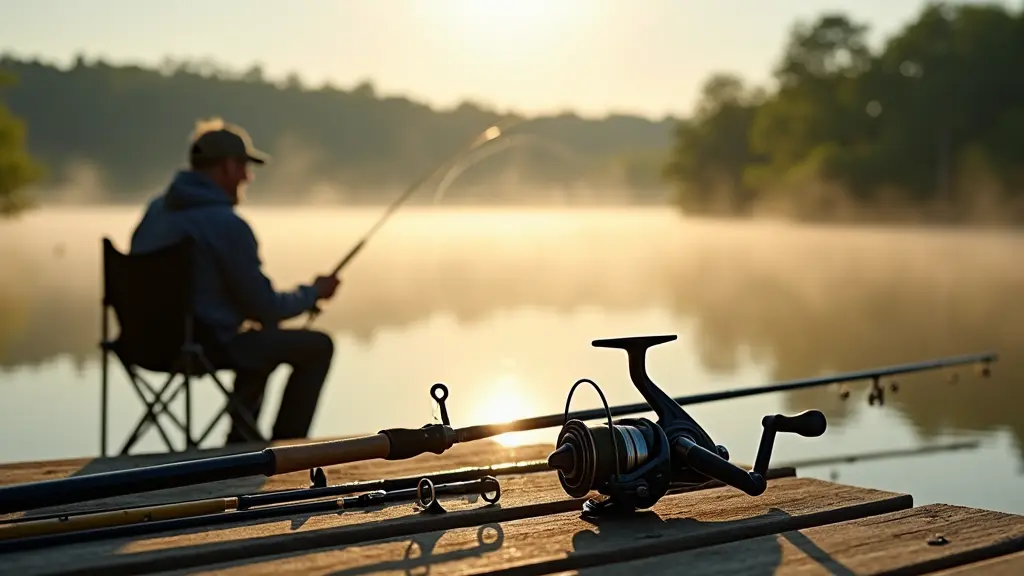
As the sun rises over the shoreline, the thrill of freshwater angling sets in, and anglers prepare to reel in their prize catch. Fishing techniques and gear play a crucial role in the success of a fishing expedition, and with the numerous options available, it’s essential to understand the features, durability, and performance of the best rods and reels.
Here, we will explore the world of bank fishing rods and reels, examining the key factors that set them apart.
Our comprehensive guide is designed to cater to anglers of all levels, from beginners to seasoned pros, with a focus on providing detailed information and expert advice for a successful bank fishing experience. In this guide, we’ll delve into the features and performance of top-rated rods and reels, covering the freshest strategies for freshwater fishing at the shoreline.
Aquatic Angling Rods for Freshwater
The rush of adrenaline that comes with reeling in a massive catch is a feeling like no other, but before you can experience it, you need the right equipment to make it happen. With the hook set firmly in your mind, you begin to wind your line with precision, carefully placing your lure in the exact spot where you hope to entice a bite.
Rivers hold many secrets, and the art of freshwater angling is all about uncovering them.
Setting the stage for a successful day on the water is crucial, as the right rod can be the difference between a thrilling catch and a disappointing trip home. When it comes to selecting the perfect rod, factors like material, construction, and action are key considerations – will you choose a rod that’s more forgiving for beginners or one that’s designed for expert casts on the river, winding line down to a lure and hook baited with anticipation as you navigate the rivers.
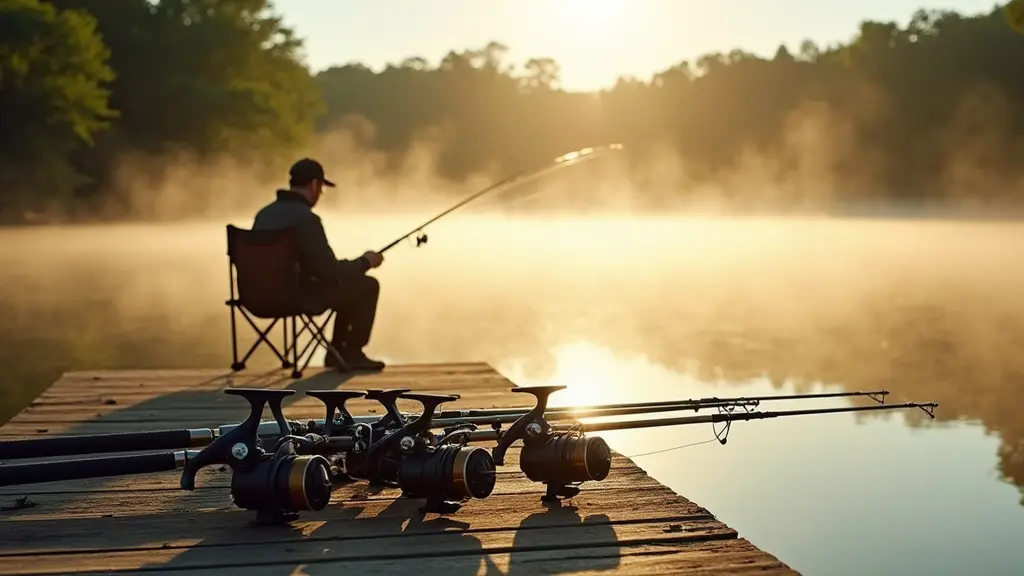
How to Choose the Right Rod for Shoreline Fishing
As you step out onto the tranquil lakeside or quiet pond’s edge, you’re ready to reel in the big one, but the right tackle is essential to achieving that goal.
Fishing on serene waters like those can be incredibly rewarding, but the right gear is crucial to a successful catch.
When it comes to choosing the right rod for shoreline fishing, many anglers get overwhelmed by the vast array of options available in the market.
By understanding your fishing goals, you can narrow down your choices and select the perfect rod for your needs.
Rod length: A rod length of 6-9ft is suitable for most shore fishing applications, as it provides the perfect balance between distance and control.
Sensitivity is another crucial aspect to consider, as it greatly affects the way you detect bites and fight fish. Look for rods and tackle that can handle the depth and currents of lakes, ponds, streams, and canals.
Facts for Shore Fishing
- Rod length of 6-9ft is suitable for most shore fishing applications.
- Sensitivity is a crucial aspect to consider when choosing a rod for shoreline fishing.
- Look for rods and tackle that can handle the depth and currents of lakes, ponds, streams, and canals.
- A rod with the right balance between distance and control is essential for a successful catch.
Fiberglass Fishing Rods for River Fishing
The thrill of river fishing lies not only in the catch, but also in the precision and skill required to navigate the currents and land a prized species. For many anglers, the quest for the perfect catch is driven by a desire to outwit the river’s subtle waters and outmaneuver its unwary inhabitants.
Fiberglass fishing rods, in particular, have gained popularity among river anglers due to their unique structure and benefits.
At its core, a fiberglass rod is made up of a combination of internal and external components that work together to provide a responsive and durable fishing experience.
Benefits of Fiberglass Rods:
One of the primary advantages of these rods is their reduced weight, making them easier to handle and maneuver in the water. EVA grip lines ensure a consistent and comfortable hold, even in rough waters with fast, medium, slow, and sensitive fishing reels.
What Features to Look for in a Bank Fishing Reel
When it comes to bank fishing, having the right gear can make all the difference between a successful catch and a frustrating afternoon spent on the shore. A reliable bank fishing reel is an essential component of your fishing kit, and choosing the perfect one can be overwhelming with the numerous options available.
As you explore the market, it’s crucial to identify the key features that will help you reel in those prized catches.
I.
Reel Materials and Construction
Durable materials like Saltwater-resistant aluminum or Fly Fishing-grade graphite are ideal for a long-lasting reel.
These lightweight yet robust materials withstand the rigors of Spinning and ensure a smooth operation.
II. Drag System and Line Capacity
An adjustable Drag System lets you set the right amount of pressure to reel in your prized catch on Fly Fishing, Spinning, Saltwater, or even tying the perfect Fishing Knots with Monofilament, Braided Line, or Superline.
EVA Grip Rods for Better Line Winding
When it comes to the art of fishing, a significant amount of skill and patience is required to land the perfect catch. One often-overlooked yet crucial aspect of fishing is the quality of the rod, particularly the grip, which can make all the difference between a successful outing and a frustrating experience.
Defining EVA grip rods and their benefits
EVA (ethylene-vinyl acetate) grip rods are a type of handle material used in fishing rods, offering numerous benefits for anglers.
By incorporating EVA into the design of fishing rods, manufacturers can create a more comfortable and secure grip, reducing fatigue and improving overall fishing performance.
How EVA material improves grip and comfort
EVA material is known for its soft, spongy texture, which provides a comfortable grip for anglers. This texture also helps to reduce slippage, allowing for a more secure and responsive drag system with the Fishing Reel Drag System.
Tackle Box Essentials for Bank Fishing
Bank fishing is a timeless tradition that has captivated anglers for centuries, offering a thrilling experience that’s deeply connected to nature.
In order to get started, you’ll need some essential gear that will help you tackle the waters effectively.
We’ll focus on the must-haves for beginners, providing you with a solid foundation to build upon.
I.
Introduction to Essential Bank Fishing Gear
A key aspect of successful bank fishing is choosing the right rod. For this, you’ll want to opt for a rod made from lightweight and durable materials, such as graphite or fiberglass, which will allow for a comfortable grip and optimal technique.
The reel is another crucial part of your gear, and its selection depends on the line capacity and retrieve rate you need. A reel with a high fishing reel gear ratio will provide a smooth and fast retrieve, ideal for casting long distances, and its compatibility with a fishing rod grip, reel seat connection, and line capacity ensures a seamless fishing experience.
Essential Bank Fishing Gear Facts
- Bank fishing rods are typically made from lightweight and durable materials such as graphite or fiberglass.
- A reel with a high fishing reel gear ratio provides a smooth and fast retrieve, ideal for casting long distances.
- The compatibility of the reel with the fishing rod grip, reel seat connection, and line capacity ensures a seamless fishing experience.
- Choosing the right rod and reel combination is crucial for successful bank fishing.
How to Select the Right Lure for Bank Fishing in Rivers
River fishing offers a unique and exciting experience for anglers, but it requires a thoughtful approach to ensure success. Fishing Rod Case
I.
Choosing the Ideal Lure for River Bank Fishing
River bank fishing presents a unique challenge for anglers, requiring a deep understanding of the aquatic environment and the species of fish that inhabit it.
When it comes to selecting the right lure, determining the species of fish you’re targeting is crucial. Structural elements such as submerged logs, rocks, and weed beds can greatly affect the location and behavior of fish, so be sure to factor these into your fishing strategy.
Fishing Rod Guides for Smooth Casting
A well-planned fishing trip is often disrupted by the frustration of tangled lines and rods, leaving enthusiasts searching for ways to improve their casting technique.
As anglers, we’ve all experienced the disappointment of a broken rod or a poor cast that could have been avoided with proper guide alignment and tension.
Guide Material Matters: The choice of guide material can significantly impact the performance and durability of your fishing rod, with ceramic, glass, and composite options offering unique benefits and trade-offs.
Ceramic guides, for instance, provide exceptional corrosion resistance and durability, making them an excellent choice for saltwater fishing and harsh environments, while glass guides offer a smooth, quiet casting experience and are ideal for fishing in streams where stealth is key, a Fishing Gear Maintenance specialist would attest.
By fully exploring the topics of Stream Fishing Secrets, Fishing Rod Comparison, Fishing Reel Review, Fishing Rod Features, Fishing Reel Advantages, Fishing Rod Disadvantages, and Fishing Gear Maintenance through composite guides.
Guide Material Matters
- Ceramic guides provide exceptional corrosion resistance and durability, making them an excellent choice for saltwater fishing and harsh environments.
- Glass guides offer a smooth, quiet casting experience and are ideal for fishing in streams where stealth is key.
- Composite guides offer a balance of corrosion resistance, smooth casting, and durability, making them suitable for a wide range of fishing environments.
- Improper guide alignment and tension can lead to broken rods and poor casting performance.
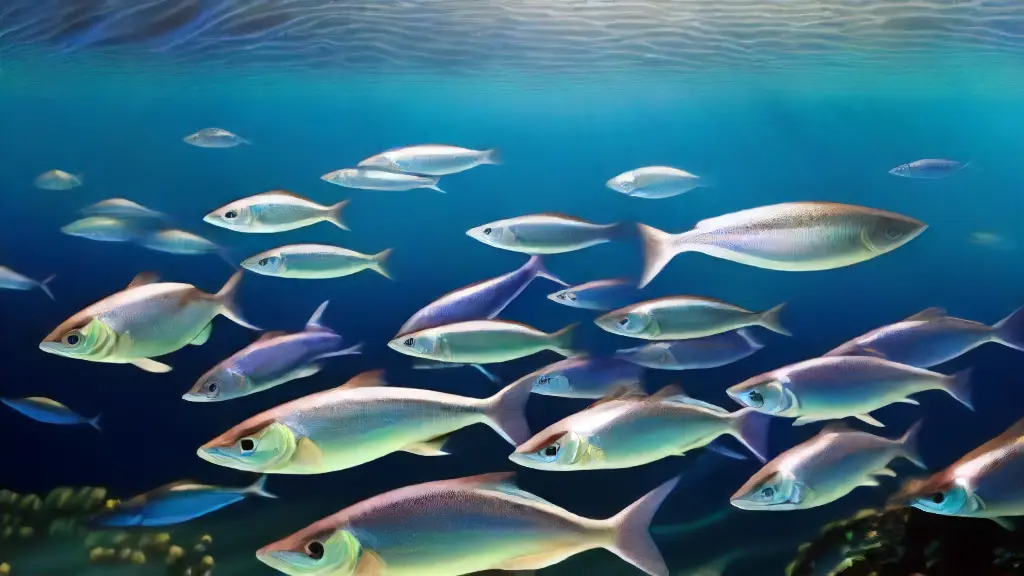
The way fish interact with their environment is fascinatingly complex, with subtle changes in the aquatic setting influencing their behavior in profound ways. In the shallower regions of our waters, the adjustments made by bait fish have a significant impact on their effectiveness as bait.
Changes in water depth significantly impact bait fish behavior, making them more or less effective as bait.
This phenomenon affects not only the type of bait used but also the fishing techniques employed.
In the first 3 feet of water, bait fish exhibit a unique behavior, grouping together in large schools to feed. This schooling behavior is crucial, as it allows them to capitalize on abundant food sources. At this depth, bait fish have specific feeding patterns, targeting particular food sources with remarkable aquatic adaptations.
Aquatic Behavior at Shallow Depths
In the intricate dance of aquatic life, the slightest changes in water depth can have a profound impact on the behavior of small fish, with significant implications for the delicate balance of their ecosystems.
The role of small fish, often referred to as baitfish, in ecosystems is multifaceted, serving as a vital food source for larger predators while also contributing to the overall health and diversity of the environment.
Understanding baitfish behavior is essential, as it influences the dynamics of predator-prey relationships and the structure of aquatic communities, making it a key area of research in ecology and conservation.
Water depth is a crucial factor in shaping baitfish behavior, with subtle shifts in patterns often occurring as depths transition from 0-3 feet, a range that can harbor diverse plants and structures. As baitfish forage, their patterns of movement and behavior adapt to the intricate structures and plants, influencing their life trajectories and avoidance of predators.
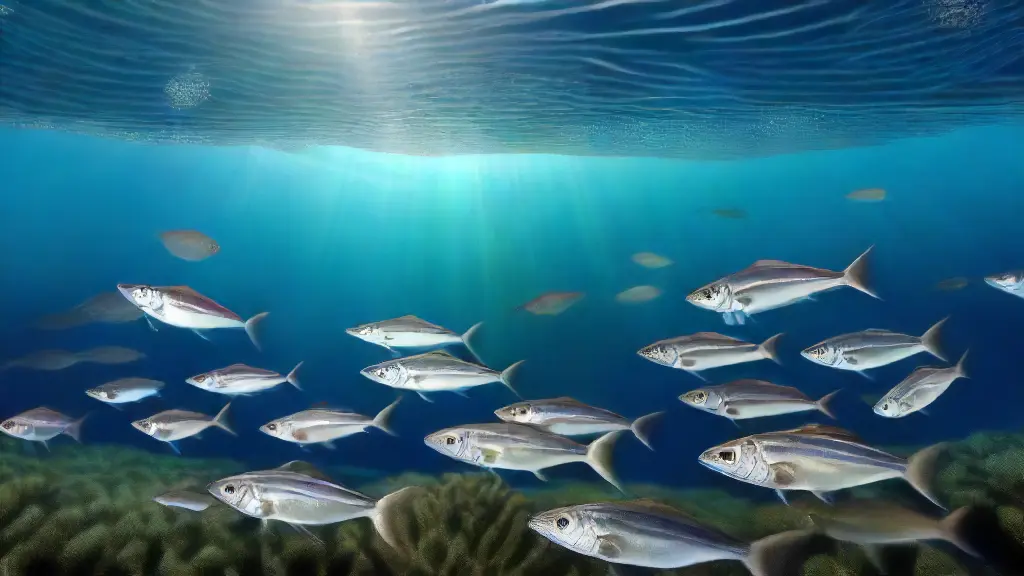
How Do Fish Respond to Pressure Changes
Fish have evolved unique traits to thrive in diverse aquatic environments, where subtle cues govern their survival and success.
The pressure change response is a critical aspect of fish behavior, as it affects their physiology and influences their movements, feeding patterns, and social interactions.
Despite their remarkable adaptability, fish face significant challenges when navigating changing pressure environments, which can impact their spatial awareness and habitat selection.
Pressure and water depth have a profound impact on fish physiology, as changes in pressure can influence the amount of oxygen available in the water, affecting their breathing patterns and overall health.
The migratory patterns of some fish species are influenced by changes in pressure, which can affect their feeding habits and social interactions.
In response to changes in pressure, fish adapt by slowing down their metabolism, reducing their activity levels, and altering their feeding habits to conserve energy. By doing so, it increases migratory birds’ spatial awareness of their cues and habitat selection.
| Pressure Change Response |
Impact on Fish Physiology |
Adaptations |
| Affects breathing patterns and overall health |
Influences amount of oxygen available in water |
Slowing down metabolism, reducing activity levels, and altering feeding habits |
| Impacts spatial awareness and habitat selection |
Influences migratory patterns and social interactions |
Increases spatial awareness of cues and habitat selection |
What Role Do Plants Play in Bait Fish Habitat
In the midst of aquatic environments, a delicate balance exists between the physical and biological components, with plants playing a vital role in shaping the intricate web of life among bait fish. Bait fish habitat and water depth are intimately connected.
Water depth determines the availability of food sources, with shallow waters often hosting more abundant and diverse food webs.
As a result, bait fish have evolved to adapt their feeding patterns to the water column, exploiting pockets of dissolved gases and navigating the complex chemistry of different depths.
Bait fish are most active in the upper 3 feet of the water column, where they can exploit the abundant food sources and navigate the thermoclines.
This critical threshold depth of 3 feet has a significant impact on baitfish behavior, influencing everything from their schooling patterns to their attractiveness to anglers. The connection between water depth and baitfish behavior is complex, influenced by the unique environments, column depth, and thermoclines that affect the dissolved gases and chemistry, which in turn impact the physiology of the baitfish.
How Does Depth Influence Foraging Patterns
The complex interplay between fish and their aquatic environment is fundamentally shaped by the dimensional aspect of water depth, which presents a multitude of habitats that dictate the evolution of diverse foraging strategies.
Water depth significantly influences baitfish behavior, with changes in attractiveness and avoidance patterns as depth increases. In shallow waters (0-3 feet), baitfish exhibit structured behavior, minimizing avoidance and maximizing attractiveness.
This is likely due to the abundance of food sources and reduced predator presence.
Conversely, in deeper waters (10+ feet), baitfish adopt structured behavior with high avoidance and low attractiveness, suggesting a greater emphasis on survival over foraging.
In environments with artificial reefs or niches, these patterns may be disrupted or amplified. The water column can be divided into three zones: top, middle, and bottom. Each zone presents unique dynamics, habitats, vegetation, artificial reefs, and niches that support distinct populations.
Facts About Fish Behavior
- Baitfish exhibit structured behavior in shallow waters (0-3 feet), minimizing avoidance and maximizing attractiveness.
- In deeper waters (10+ feet), baitfish adopt structured behavior with high avoidance and low attractiveness, suggesting a greater emphasis on survival over foraging.
- The water column can be divided into three zones: top, middle, and bottom, each presenting unique dynamics, habitats, vegetation, artificial reefs, and niches that support distinct populations.
- Water depth significantly influences baitfish behavior, with changes in attractiveness and avoidance patterns as depth increases.
Can Bait Fish Cues Convey Danger
Wandering through the watery realm, we stumble upon a peculiarity that has piqued the curiosity of many – the intriguing behavior of bait fish. These small, schooling fish play a vital role in the intricate web of marine life, their actions serving as a vital indicator of the ocean’s rhythms.
In the depths of the ocean, changes in bait fish behavior are closely tied to the benthic gradients.
In the midst of the darkness, (10-20 meters), bait fish tend to lead solitary lives, only occasionally feasting on small, suspended prey.
As the depths decrease, however, they flock together in community, frequenting shallower waters to devour larger, settled prey. In the shallows (up to 3 meters), their feeding habits are abundant, with specific schooling patterns the norm. Adjusting to their surroundings, the microbes thrived in the community where the temperature fluctuations matched the subtle gradients across the logs, sediments, and benthic zones.
Why Do Fish School in Certain Zones
In the ever-changing environments of aquatic ecosystems, turbulence reigns supreme, setting the stage for a delicate balance of life and survival. The dynamics of water flow and substrates create a complex tapestry of microhabitats, where fish must adapt to thrive.
One of the most fascinating aspects of fish behavior is their tendency to school in certain zones.
But why do they do this? The answer lies in the advantages of foraging together.
By schooling, fish can increase their chances of finding food, evade predators, and even communicate with each other.
Water depth plays a significant role in shaping fish behavior.
Different species have evolved to thrive in specific depths, where they can exploit unique oxygen levels and escape predators. For example, baitfish that feed on surface-dwelling insects may school in shallow waters, while those that feed on bottom-dwelling organisms prefer areas with gentle flow near oxygen-rich interfaces overlying substrates with varied microhabitats that promote turbulence.
| Turbulence |
Water Depth |
Food Sources |
Predator Avoidance |
| Increases chances of finding food |
Determines species’ evolution and survival |
Surface-dwelling insects, bottom-dwelling organisms |
Evade predators through schooling |
| Creates complex tapestry of microhabitats |
Species-specific depths for exploitation |
Insects, organisms |
Communication through schooling |
| Essential for fish survival |
Shallow waters for baitfish, gentle flow for others |
Surface-dwelling, bottom-dwelling |
Foraging together increases chances of survival |
What Effects Does Spatial Awareness Have on Behavior
The intricate dance of species and their surroundings has long fascinated scientists, with spatial awareness playing a crucial role in shaping the behavior of countless creatures.
Baitfish, particularly those found in shallower waters, exhibit unique feeding patterns that are deeply connected to their spatial awareness.
For instance, in areas with moderate to high water clarity, baitfish often feed near the surface, where visibility is best.
In deeper waters, where visibility is reduced, baitfish tend to gather in schools around structures like drop-offs, reefs, and sunken logs, where their spatial awareness helps them navigate boundaries between different ecologies.
The morphology of a body of water also influences the behavior of baitfish. For example, in rivers and streams, the constant flow of water creates a unique geography that baitfish adapt to, using their spatial awareness to navigate transitions and find food in the ever-changing climate.
How Do Thermoclines Affect Bait Fish Life
Beneath the surface of lakes and reservoirs, a subtle yet significant phenomenon occurs, influencing the lives of bait fish and their inhabitants. Weather conditions may seem calm and tranquil, but beneath the surface, temperature gradients are forming, shaping the behavior and distribution of bait fish.
Water Depth and Bait Fish Distribution: Bait fish congregate in specific water depths, driven by factors such as food availability, habitat suitability, and predation avoidance.
In areas with thermoclines, bait fish often concentrate in the upper or lower regions, depending on the temperature gradient.
Water temperatures that exist in a state of equilibrium, characterized by a clear distinction between warm and cold water layers, have a profound impact on the distributions of bait fish. Conditions that foster the growth of aquatic plants and invertebrates, in turn, influence the abundances of bait fish, which ultimately affect the states of various fishing activities and migrations.
Bait Fish Distribution
- Bait fish congregate in specific water depths, driven by factors such as food availability, habitat suitability, and predation avoidance.
- In areas with thermoclines, bait fish often concentrate in the upper or lower regions, depending on the temperature gradient.
- Water temperatures that exist in a state of equilibrium, characterized by a clear distinction between warm and cold water layers, have a profound impact on the distributions of bait fish.
- Conditions that foster the growth of aquatic plants and invertebrates, in turn, influence the abundances of bait fish, which ultimately affect the states of various fishing activities and migrations.
Best Practices for Using Bait Fish in Clear Water
Best Ways to Mimic Bait Fish Behavior with Lures
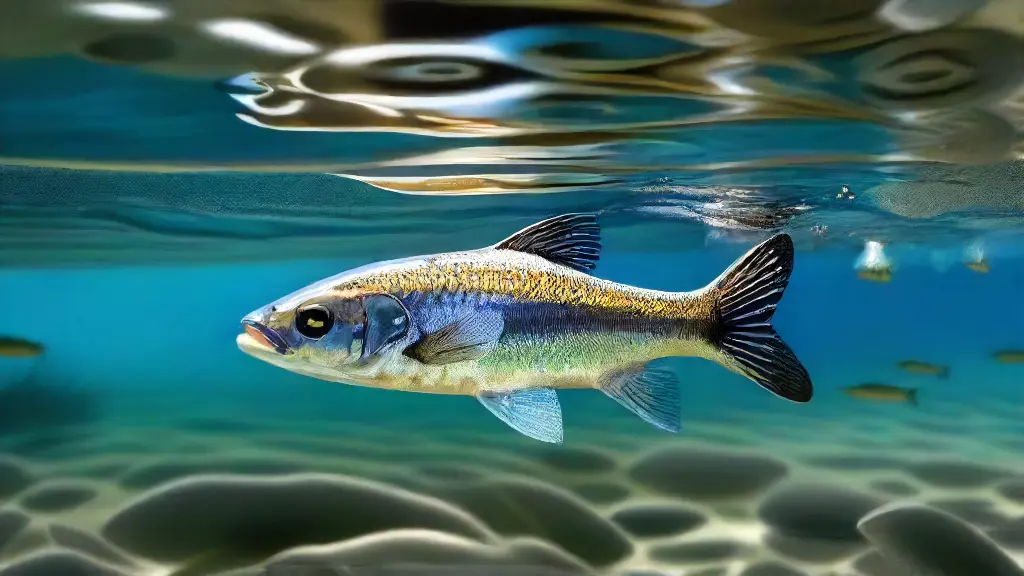
Fishing’s secret treasure lies in the art of mimicry, where cleverly designed lures replicate the behavior of bait fish, fooling predators into striking. By studying the intricacies of bait fish behavior and how they react to predators, anglers can unlock the power of mimicry, leading to a higher catch rate.
Bait fish swim in schools, dart back and forth, and change direction rapidly to evade predators.
Fish lures that mimic these movements can be highly effective in attracting predators such as bass, pike, and muskie.
Understanding the dynamics between bait fish and predators is crucial in selecting effective lures.
What to Mimic
Mastering the art of mimicry is a crucial aspect of successful fishing, and it’s one thing to learn from experts but another to adapt their techniques to your unique fishing style.
Avoiding the most common mistakes
One of the most critical aspects to master is adopting the right swimming pattern.
By incorporating strike triggers into your technique, you can increase your chances of catching fish.
When you’re aware of the subtle cues that signal a bite, you can adjust your lure accordingly, making it easier to set the hook.
Talking the talk is essential in fishing, and this includes understanding the movement of bait fish. By mimicking their speed and recovery, you can create a more realistic presentation that triggers a strike.
It’s all about mastering the art of line management, which is why it’s crucial to understand the importance of these factors. Let me know your thoughts on the fishing techniques, covering bite detection, strike triggers, catching fish, hook setting, line management, rod selection, reel operation, tackle choice, baitcasting methods, and flyfishing styles in saltwater fishing.
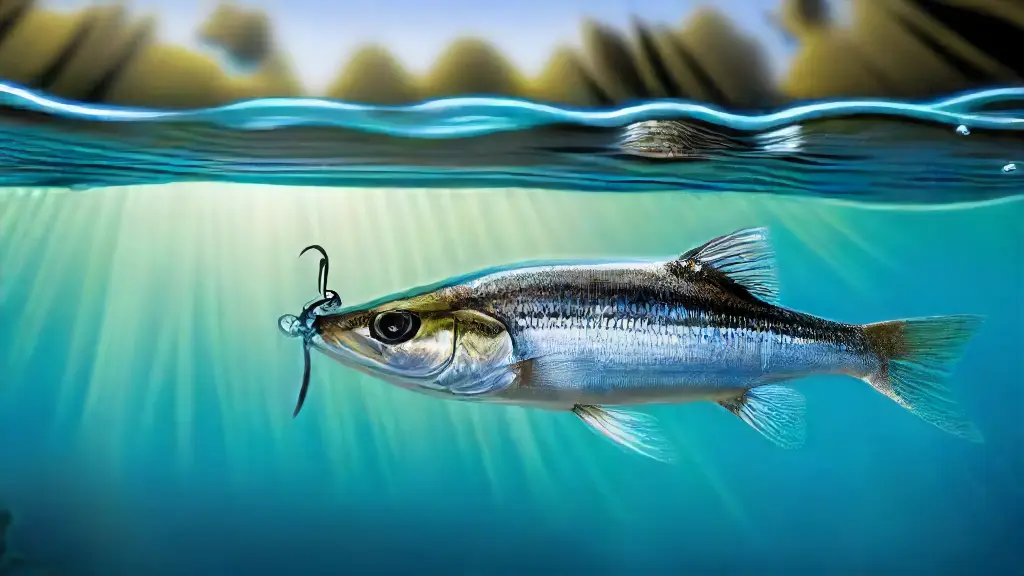
What to Avoid
The art of freshwater fishing is a delicate dance between angler and aquatic ecosystem. Effective strategies rely on a profound understanding of the intricacies that govern lure presentation and fish behavior.
Freshwater fishing, for instance, is greatly impacted by water clarity and structure, which can significantly affect the movement and action of lures in the water.
To avoid overlooking these critical factors, it’s essential to grasp how water clarity and structure influence lure presentation, including the way light penetrates the water and the type of fish species-specific to the habitat.
Species-specific fish like bass and walleye are particularly sensitive to these factors.
This knowledge empowers anglers to select the right lure size and action, as well as the appropriate hook type and size, to maximize their chances of landing their desired catch. The size and shape of the lure also plays a crucial role in determining.
Freshwater Fishing
- Water clarity can significantly affect the movement and action of lures in the water, with clear water allowing for more precise presentations and murky water requiring more aggressive actions.
- Freshwater fish species like bass and walleye are particularly sensitive to water clarity and structure, with changes in these factors affecting their behavior and feeding patterns.
- The size and shape of the lure can greatly impact its effectiveness, with different species preferring different lure sizes and actions.
- Understanding how light penetrates the water is crucial for effective lure presentation, as it can affect the visibility and attractiveness of the lure to fish.
How to Present
In the world of angling, understanding the subtle art of presenting lures that mimic bait fish behavior is crucial for success. By grasping the intricacies of feeding habits, schooling behavior, and migration patterns of these diminutive predators, anglers can dramatically boost their chances of enticing a bite.
To begin, it’s essential to recognize that bait fish are opportunistic feeders, meaning they consume whatever is most readily available in their environment.
They tend to congregate around areas with abundant food sources, such as structure, weed beds, or schooling fish.
By observing bait fish behavior, anglers can gain insight into the types of lures that mimic their natural appearance and movement.
Depth control is a crucial factor in presenting lures that mimic bait fish behavior. By adjusting the retrieve speed, anglers can create better presentations of their lures.
When to React
The Art of Timing in Fishing As you wait for that big catch, timing becomes the key to success. The subtle movements and reactions of fish are often triggered by minute changes in the water environment.
For instance, strong currents and turbulence in waters with rocky formations can trigger a reaction bite from fish that inhabit these areas.
Water temperature also plays a significant role in determining fish behavior.
In warmer waters, fish tend to become sluggish, while in colder waters, they become more active. Identifying the importance of timing in lure presentation is crucial, as a slight delay in presentation can lead to a missed opportunity.
Understanding the concept of reaction bites and how to capitalize on them is vital. These bites are often characterized by a sudden and intense strike.
By recognizing the signs and adapting your fishing strategy accordingly, you can increase your chances of landing the big catch. Fishing in waters with diverse structure types, weed coverage, rock formations, sand bottoms, mudflats, varying water temperature, salinity levels, pressure zones, current flows, and turbulence.
What Fish See
In the underwater world, the art of detection is a crucial aspect of survival for fish. Wave action in the water creates subtle movement patterns that fish use to detect prey and predators.
Visual cues play a vital role in the decision-making processes of fish, and understanding these cues can greatly enhance our angling experience.
When it comes to how fish perceive their environment, several key features of their vision stand out.
They can detect movements and changes in their surroundings even in conditions that would be considered murky or dimly lit by humans. Fish have a unique field of view, allowing them to see almost 360 degrees around them.
The Importance of Contrast and Movement
Fish rely heavily on two crucial aspects of their environment to detect prey and predators: contrast and movement. They use contrast to differentiate between different shapes, colors, and textures, allowing them to successfully track and catch fish using various techniques such as wave action, ripple patterns, ebb and flow, buoys signals, fly patterns, hook types, jigging techniques, plug design, soft bait presentation, crankbait retrieval, and spinner patterns.
How Fish Bite
The thrill of reeling in a prized catch is a sensation like no other. In the world of fishing, understanding the intricacies of fish behavior is crucial for landing the big one.
Fish movement plays a significant role in determining how they strike lures, with different species exhibiting unique patterns of navigation and swimming.
For example, some fish swim in schools, while others are solitary predators.
Understanding these patterns is essential for presenting lures in a way that attracts predators.
Baitfish imitation strategies are based on the key characteristics of these small fish, which attract larger predators.
Spoon shapes, in particular, mimic the natural movement of baitfish, drawing in predators with ease. By incorporating these features into lure design, anglers can increase the effectiveness of their lures.
When selecting lures for baitfish imitation, anglers should consider factors such as depth and water clarity. The solution requires careful analysis and consideration to create a complete last sentence based on the given words.
Why Fish Struggle
As the warm sun rises over the water, a subtle battle unfolds beneath the surface, where cunning fish navigate the depths in pursuit of sustenance and shelter.
Understanding Bait Fish Behavior
Bait fish are naturally drawn to specific attractants and aggregators, such as crayfish actions, which can be replicated using the right lure design and movement.
By mimicking these behaviors, anglers can increase their chances of attracting attention from potential catches.
Mimicking Bait Fish Traits
Lure color simulation plays a crucial role in attracting bait fish, with many species responding to vibrant colors like leeching patterns. Vibration, noise, and action-reaction techniques can also be used to stimulate a response, helping anglers to effectively catch species such as crayfish, channel catfish, and bluegill.
What to Expect Next
Becoming a proficient angler requires a deep understanding of the intricacies that make bait fish tick. By grasping the subtle nuances of their behavior, you can develop a keen sense of what attracts them and what sends them running.
Mastering the Art of Lure Selection requires understanding the subtle differences in lure action and presentation.
Lures like Sardine imitation can mimic the natural movement of bait fish, making them an excellent choice for targeting species like Bluegill and Perch.
Effective Lure Presentation is key to enticing bites. Techniques like Mackerel patterns and Anchovy mimicry can be emulated by adjusting lure speed and retrieve, making it crucial to experiment with different presentations to find what works best for you.
| Understanding Bait Fish |
Lure Selection |
Effective Presentation |
Target Species |
| Grasping subtle nuances of behavior |
Subtle differences in lure action and presentation |
Adjusting lure speed and retrieve |
Bluegill and Perch |
| Developing a keen sense of what attracts and repels |
Imitation lures like Sardine |
Mackerel patterns and Anchovy mimicry |
N/A |
!
How Bait Fish Behavior Changes with Water Depth
How Bait Fish Behavior Influences Predator Fish
|


